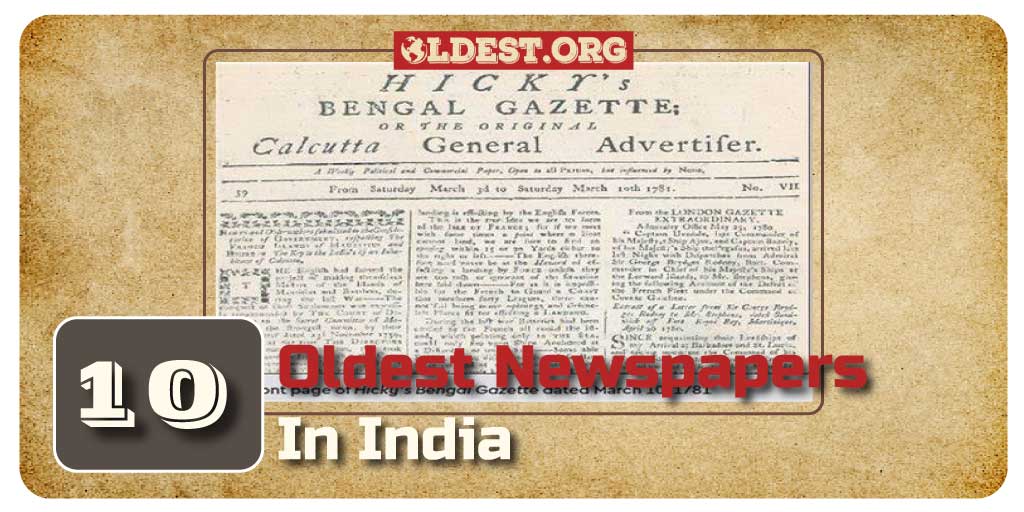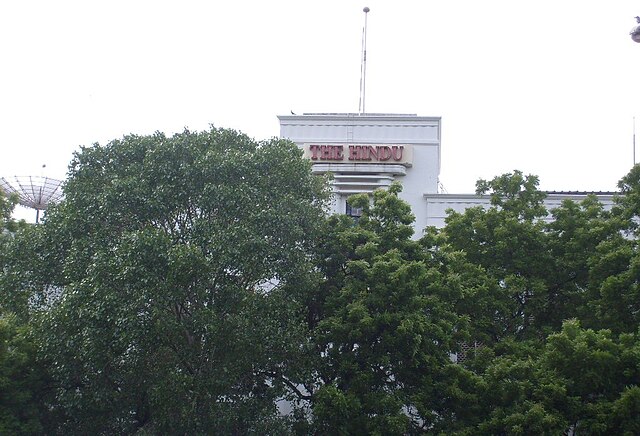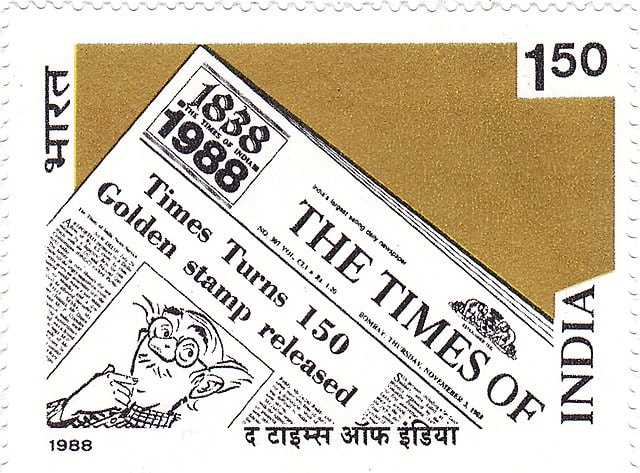Newspapers hold an integral place in India’s societal and political landscape, capturing the shifts in history, societal dynamics, and the nation’s growth. A testament to their enduring significance, several newspapers have weathered the passage of time and still significantly influence public discussions.
Let’s journey through history as we delve into the 10 oldest newspapers in India, each contributing a distinct element to the nation’s journalistic legacy.
10. The Telegraph
Year of launch: 1982
Still in Use: Yes
While relatively new compared to others on this list, The Telegraph’s impact cannot be overlooked. Launched in 1982, it quickly gained prominence for its incisive reporting, editorial content, and innovative layout. Headquartered in Kolkata, The Telegraph caters to readers across India.
Did You Know?
The Telegraph pioneered computerized typesetting and offset printing in India, reshaping the newspaper industry.
9. The Indian Express
Year of launch: 1932
Still in Use: Yes
Founded in 1932 by Ramnath Goenka, The Indian Express has carved an enduring place in India’s journalism landscape. It is celebrated for its fearless and investigative journalism, consistently upholding its commitment to accurate reporting and highlighting issues of public concern. The newspaper’s reporting has often uncovered stories that have shaped the nation’s destiny.
Did You Know?
During the Emergency (1975-1977), The Indian Express boldly criticized the government’s actions and defended free speech and democracy, earning it the moniker “The Rebel.”
8. Mathrubhumi
Year of launch: 1923
Still in Use: Yes
Mathrubhumi, founded in 1923, is another prominent Malayalam-language newspaper. It was established by K. P. Kesava Menon with the goal of promoting social and political awareness among the masses. Mathrubhumi has consistently upheld its journalistic integrity and remains a reliable source of news for readers in Kerala.
Did You Know?
Mathrubhumi has been a vocal advocate for regional identity and culture. During the freedom struggle, the newspaper actively promoted the use of the Malayalam language and played a key role in shaping Kerala as a linguistic state in 1956.
7. Anandabazar Patrika
Year of launch: 1922
Still in Use: Yes
Founded in 1922, Anandabazar Patrika is a distinguished Bengali newspaper that has grown to be one of the most read publications. Established by Suresh Chandra Majumdar and Prafulla Kumar Sarkar, it started as a weekly before transitioning into a daily. It championed the rights of Indians during the independence movement and played a significant role in advocating for regional culture. It is now a prominent voice for Bengali readers and a significant player in the growth of Bengali journalism.
Did You Know?
Anandabazar Patrika played an instrumental role in shaping public opinion during India’s independence movement. It advocated for the rights of the Indian people and championed the cause of Swadeshi (domestic production) as part of the freedom struggle.
6. Malayala Manorama
Year of launch: 1888
Still in Use: Yes
Malayala Manorama, established in 1888, is one of the oldest and most widely circulated newspapers in Malayalam. Founded by Kandathil Varghese Mappillai, it started as a weekly publication before transitioning to a daily newspaper. Over the years, Malayala Manorama has earned the trust of readers with its in-depth reporting and comprehensive coverage of regional and national events.
Did You Know?
Malayala Manorama started as a humble publication with a vision to create a newspaper that would be accessible to the common man. Today, it remains one of the most widely read newspapers in Kerala, reflecting its enduring popularity.
5. The Tribune
Year of launch: 1881
Still in Use: Yes
Founded in 1881 in Lahore (now in Pakistan), The Tribune is an esteemed English-language newspaper prominent in North India. After India’s partition in 1947, it relocated to Ambala and then to Chandigarh. Renowned for its unbiased coverage, The Tribune has established itself as a reliable source of news, covering regional and national subjects with integrity.
Did You Know?
The Tribune persevered through two World Wars and the partition, emerging as a voice for leaders like Jawaharlal Nehru and Mahatma Gandhi during the freedom struggle.
4. The Hindu
Year of launch: 1878
Still in Use: Yes
Established in 1878 as a weekly, The Hindu stands as a respected English-language newspaper renowned for its credible and unbiased reporting. Originating in Chennai, it maintained high standards in journalism, becoming synonymous with trustworthy news coverage. It spans across various subjects such as politics, economics, science, culture, and more, offering valuable insights into both national and international developments.
Did You Know?
During the Emergency (1975-1977), a time of restricted press freedom, The Hindu bravely criticized the government’s actions, becoming one of the few newspapers upholding free speech and democratic values.
3. The Statesman
Year of launch: 1875
Still in Use: Yes
Launched in Kolkata (Calcutta) in 1875, The Statesman is known for its insightful editorials and comprehensive coverage of global and local affairs. Founded by Robert Knight, it aimed to provide a moderate and independent voice during the colonial era. The newspaper has consistently delivered objective reporting and has been acknowledged for its impartial coverage of significant events and issues.
Did You Know?
During India’s struggle for freedom, The Statesman emerged as a fearless critic of colonial rule and a powerful voice for the aspirations of the Indian populace.
2. Amrita Bazar Patrika
Year of launch: 1868
Still in Use: No (ceased publication in 1988)
Founded in 1868 by Sisir Kumar Ghosh and Moti Lal Ghosh, Amrita Bazar Patrika holds the honor of being one of the oldest Bengali newspapers. Initially based in Jessore (now in Bangladesh) and later in Kolkata (Calcutta), it was an influential voice during the Indian independence movement. It voiced opposition to British colonial rule and championed the rights of Indians. The newspaper became a focal point for Bengali nationalism and regional identity.
Did You Know?
Amrita Bazar Patrika was among the first newspapers to own its printing press, giving it a competitive edge and a wider reach among readers.
1. The Times of India
Year of launch: 1838
Still in Use: Yes
Beginning as The Bombay Times and Journal of Commerce in 1838, The Times of India stands as the oldest English-language newspaper in India. Its roots trace back to the British colonial era, initially catering to the expatriate community in Bombay (now Mumbai).
Initially concentrated on business news and advertisements, it evolved into a comprehensive publication covering global and local events, sports, entertainment, and more. Today, it remains a highly circulated and influential newspaper across major cities.
Did You Know?
During India’s quest for independence, The Times of India played a pivotal role as a platform for dissent and advocating for self-governance. It was utilized by eminent freedom fighters like Mahatma Gandhi to communicate and rally the masses for Swaraj (self-rule).
Conclusion
The oldest newspapers in India bear witness to the nation’s evolution, capturing its victories, challenges, and growth. They remain pillars of democracy, empowering readers with accurate information.
Adapting to the digital age, their legacy is steeped in the pursuit of truth and responsible journalism, inspiring generations of journalists. These newspapers continue to wield influence, reflecting their timeless commitment to ethical reporting. They leave an indelible mark on India’s journalism legacy, shaping discussions and driving enlightenment in the nation’s journey.




















